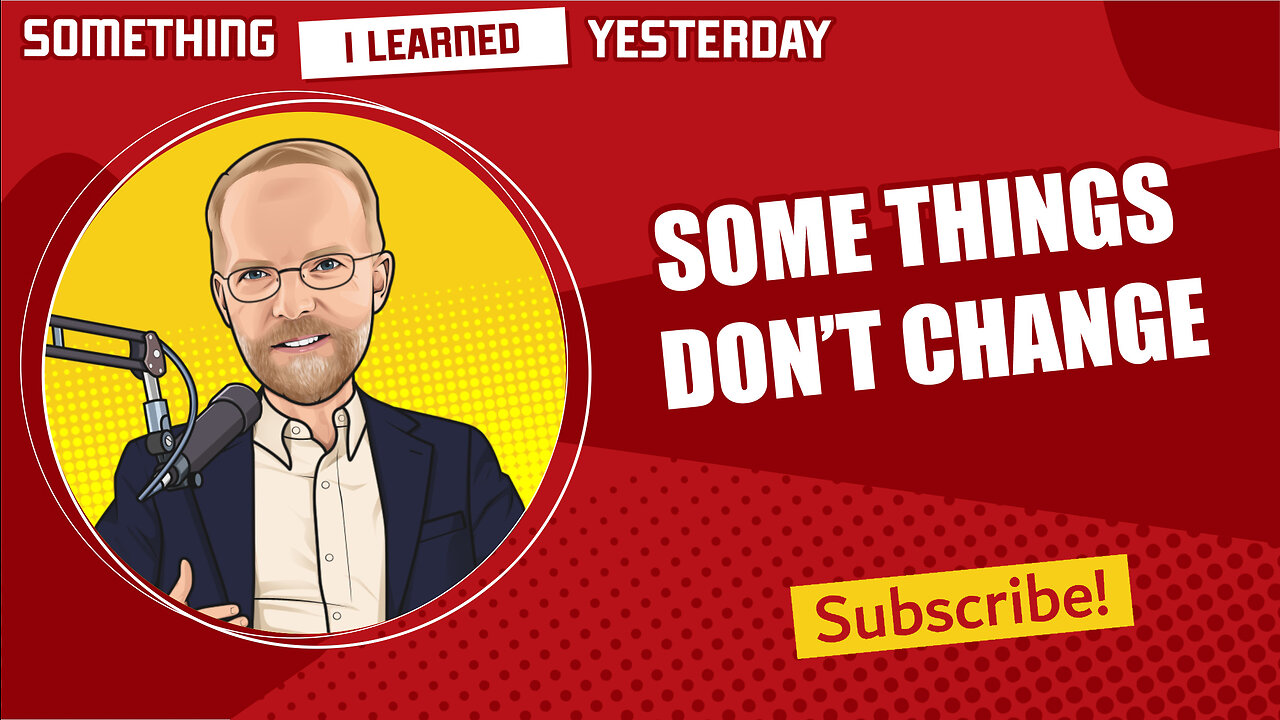Premium Only Content

Media rules that endure despite transition and transformation
A subscriber to The Krehbiel Letter told me that one thing he gets from my content is an emphasis on what stays the same during a time of radical transformation.
He works in change management, and that's one of the issues people face when the world is changing all around them – that is, what can and should change, and what can and should stay the same?
It reminds me of an exercise I used to put my kids through where I'd present a dilemma and ask them if it was a moral question or a cultural question. And that's very similar to what goes on in change management. What's permanent and what's temporary? What can we afford to jettison, and what had we better cling onto?
So I thought I'd start to make a list for publishers of things that don't change even while the world seems to be crumbling and morphing and transforming all around them.
So here’s a start. I invite you to suggest your own.
You have to solve a problem or meet a need. How does your product benefit your customer?
Everything depends on trust. If you lose your customers' trust, you have nothing.
Efficiency matters. Your margin is your competitor's opportunity.
Expertise matters. Somebody has to know when the AI is wrong.
Convenience is good, but people will tolerate some inconvenience for what’s truly necessary.
You have to have your eye on the horizon and your hands in the weeds.
An "intuitive interface" is a childish conceit. Make sure people know how to use your product.
Quality can be a selling point, but good enough is often good enough.
Humans are creatures of habit -- on both sides of the content experience. Strive for a regular, predictable and reliable cadence.
Yesterday's market is gone. You need to make adjustments based on where people are today, and where you think they'll be tomorrow.
People like stories, but don't be stupid about it. Nobody wants a story about the weather. They just want to know if they should bring an umbrella.
Passion and authenticity are alluring, but sometimes people just want a ham sandwich.
Diversify. Who knows what's going to work, and what's going to collapse. Have several oars in the water.
Cultivate a relationship with your customer, but also between and among your customers.
Strive for long-term value. Finding new customers all the time is tiresome work, and you don’t learn as much from drive-by customers.
Use data as much as you can, but check your conclusions against real-life feedback and experience.
Keep a wary eye on trends. Most trends turn out to be nothing. But on the other hand, when you’ve got a wave, surf!
I think the bottom line is that we all need to make a careful distinction in our minds between what’s changing, or even able to change, and what’s stable.
For example, human nature does change, but probably not on a time scale that any of us will benefit from. So you should be a student of human nature, and make sure you put those things on the “stable” side of the ledger.
So that’s what I came up with today. I’m going to keep this document handy so I can add to it as things occur to me, but if you have some ideas, please pass them along.
-
 LIVE
LIVE
Jeff Ahern
55 minutes agoFriday Freak out with Jeff Ahern
437 watching -
![CIA’s USAID SUES TRUMP FOR UNCONSTITUTIONAL SWAMP DRAINING // EP 4432-8AM]](https://1a-1791.com/video/fwe1/43/s8/1/j/d/d/A/jddAx.0kob-small-CIAs-USAID-SUES-TRUMP-FOR-U.jpg) LIVE
LIVE
The Pete Santilli Show
16 hours agoCIA’s USAID SUES TRUMP FOR UNCONSTITUTIONAL SWAMP DRAINING // EP 4432-8AM]
1,670 watching -

Game On!
8 hours ago $0.75 earnedJosh Allen Wins NFL MVP! Was Lamar Jackson ROBBED?
5.24K3 -
 11:16
11:16
IsaacButterfield
1 day ago $1.64 earnedThe Most Dangerous Man In The World
16.1K4 -
 1:03:56
1:03:56
Kyle Rittenhouse Presents: Tactically Inappropriate
15 hours ago $2.01 earnedNo more income tax?
16K6 -
 21:37
21:37
The Finance Hub
18 hours ago $3.18 earnedBREAKING: JOE ROGAN JUST DROPPED A MAJOR BOMBSHELL!!!
11.1K10 -
 16:37
16:37
Alabama Arsenal
13 hours ago $0.56 earnedOtter Creek Labs Infinity
6.58K -
 7:18
7:18
Randi Hipper
15 hours agoHAWK TUAH DELETES NEW PODCAST AFTER CRYPTO SCAM
8K4 -
 19:47
19:47
Degenerate Jay
23 hours ago $0.52 earnedThe Missed Potential Of Fullmetal Alchemist Video Games
12.6K -
 59:43
59:43
Trumpet Daily
21 hours ago $4.74 earnedCorruption Like You Never Imagined - Trumpet Daily - Feb. 6, 2025
17.7K36